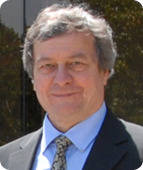

Some Thoughts on the Possible Evolution Paths for the HP Memory Project
by Marc Mislanghe, October 2012.
The HP Memory Project is now 15 years old. The overall HP Memory Project concept started from my realization that having had the good fortune to work for the world's most successful High-Tech Company, I needed to create some shareable work of gratitude.
The main objective of the project has always been (and still is), to create a place worth visiting. It will provide a home for exhibiting, preserving and explaining all of the contributions made by HP to the sciences of measurement and computing during the second half of the 20th century, the "Golden Years" of High Tech. This goal is constantly kept in mind while collecting all necessary artifacts.
The following chapters will inventory the currently available resources, and suggest some of the many ways in which they could be used to create such a place . . .
. . . A walk through 60 years of tangible engineering success!
. . . Pioneering - Inventing - Innovating





